[orc]There was a barrage of fake news recently on the issue of ‘tendered’ & ‘challenge’ vote. While these terms exist in the election lexicon, they mean something else than what is conveyed in those viral posts.
There was a barrage of fake news recently on the issue of ‘tendered’ & ‘challenge’ vote. While these terms exist in the election lexicon, they mean something else than what is conveyed in those viral posts. Here is a detailed look at all these special cases.
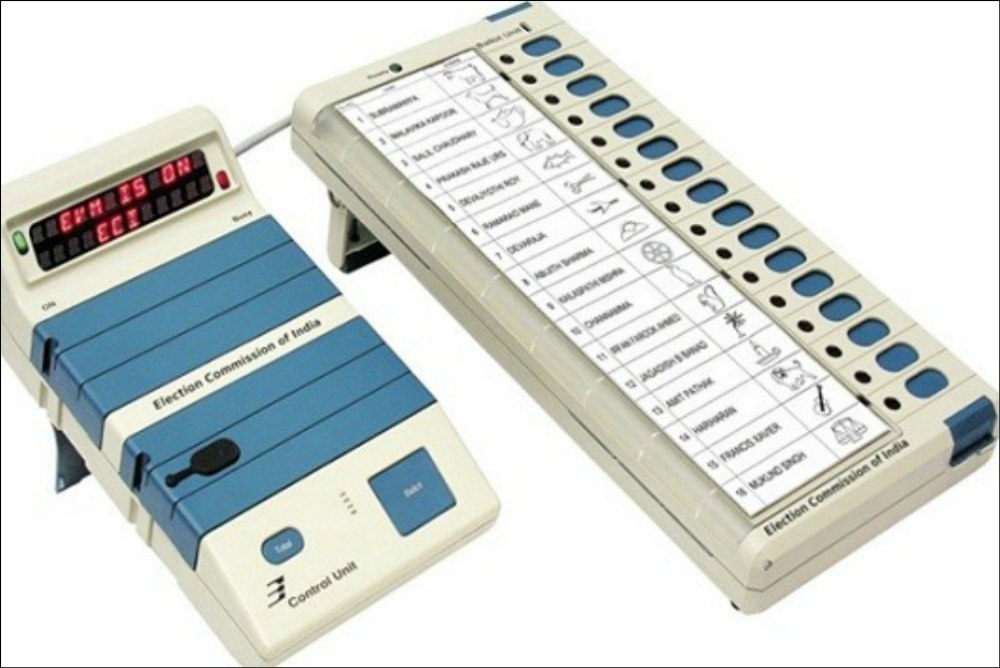
The case of ‘Tendered’ votes
Impersonation of voters is a real possibility during elections and the concept of ‘Tendered’ vote is to tackle such situations.
As per ‘Rule 49P’ of the ‘The Conduct of Elections Rules, 1961’, if a person representing himself to be a particular elector (voter) seeks to vote after another person has already voted in his place, he/she has to satisfactorily answer any such question posed by the presiding officer related to his/her identity. If there is a satisfactory answer, the presiding officer does not allow him to vote through the EVM, but supply him with a tendered ballot paper which shall have the same details as on the EVM.

Before the tendered ballot paper is supplied, the voter has to has to enter his name in form 17B. Once he receives the ballot paper, he can cast his vote with a ‘X’ mark on the ballot paper in the voting compartment. He has to fold the paper and hand it over to the presiding officer. The presiding officer then has to place this ballot paper in a cover specially kept for this purpose.
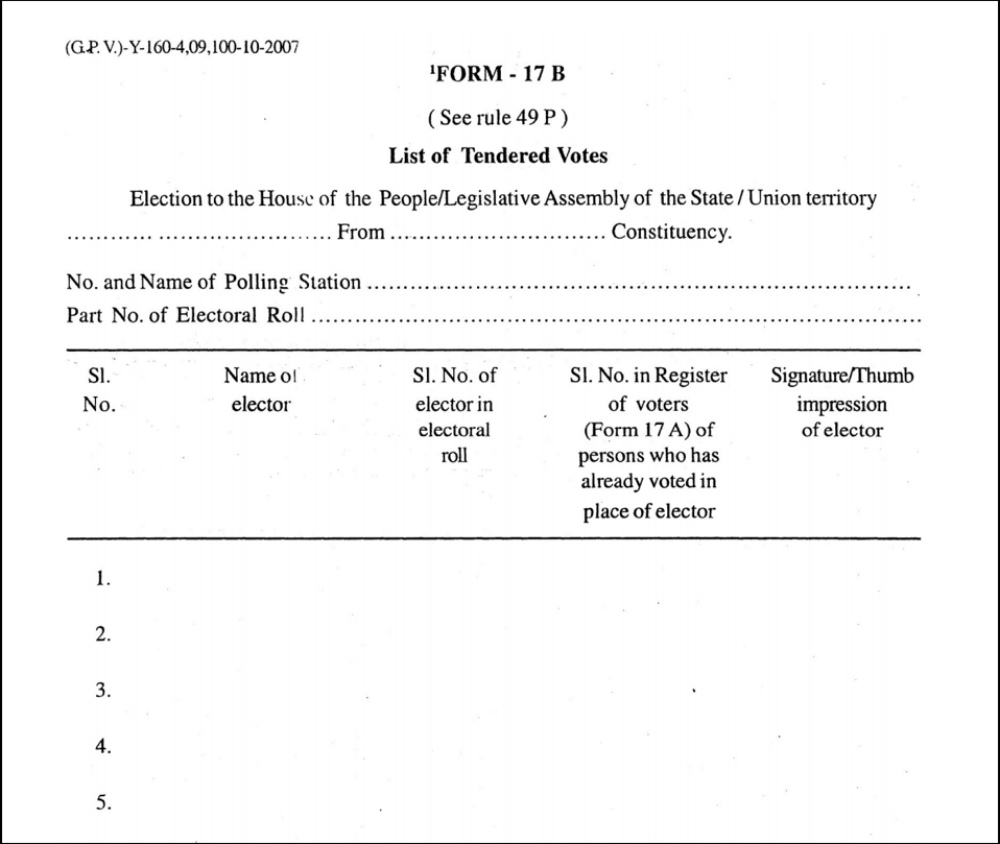
The record of such tendered votes also has to compiled in form 17C.
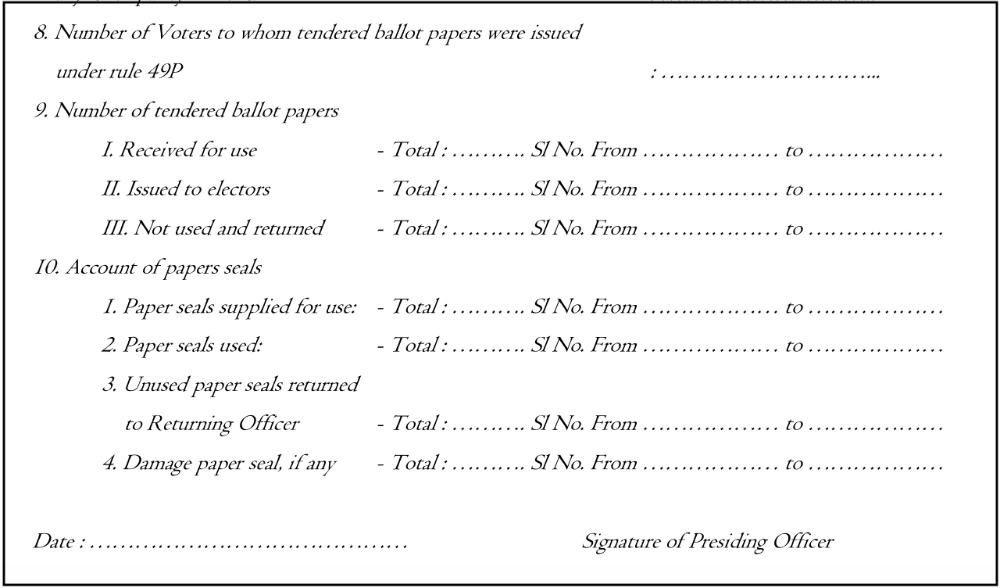
What happens to these ‘Tendered Votes’?
As per ‘Rule 56’ of ‘The Conduct of Elections Rules, 1961’, the tendered votes are not counted during the normal counting process. In other words, the cover containing these tendered ballot papers shall not be opened during counting and shall not be counted.
The tendered votes will only be counted on the directions of a competent court (the High court or the Supreme court) when an election petition is filed under ‘Section 83’ of ‘The Representation of the People Act, 1951’. An election petition can be filed by the voter of a particular constituency whether or not he has voted or by a contesting candidate.
The Supreme Court has also laid down the following conditions that constitute reasonable grounds for tendered votes to be counted, in ‘Wilfred D’souza Vs. Francis Menino Jesus Ferrao’.
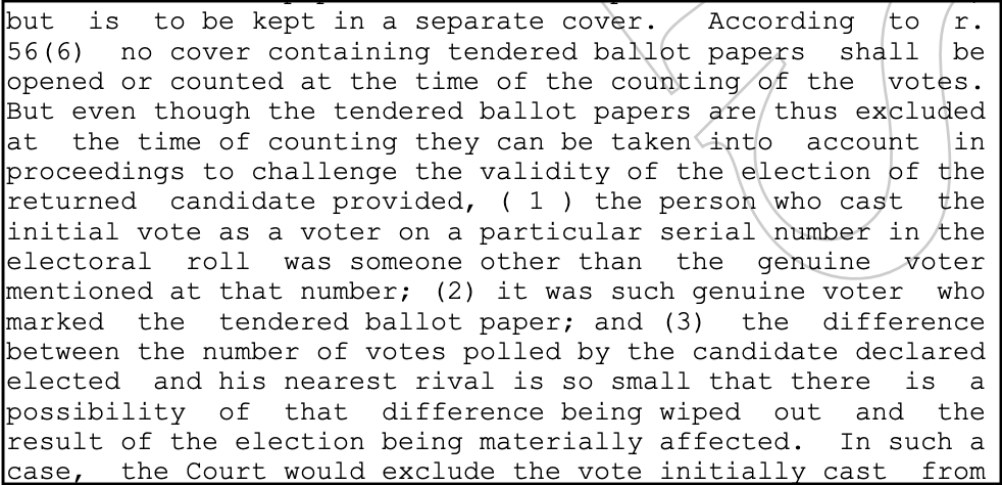
- the person who cast the initial vote as a voter on a particular serial number in the electoral roll was someone other than the genuine voter mentioned at that number
- it was such genuine voter who marked the tendered ballot paper; and
- the difference between the number of votes polled by the candidate declared elected and his nearest rival is so small that there is a possibility of that difference being wiped out and the result of the election being materially affected with the tendered votes
Busting the Myths around ‘Tendered Votes’
1. Does the concept of ‘Tendered Votes’ exist? (Yes)
2. Is a repoll conducted when the tendered votes exceeds a certain percentage? (No)
3. Are tendered votes counted during the normal counting process irrespective of their number? (No)
Is there a recent case involving Tendered votes?
One of the recent cases where tendered votes played a role was elections to the Nathdwara Legislative Assembly constituency in Rajasthan in the year 2008, where Congress’s C P Joshi lost to BJP’s Kalyan Singh Chouhan by a mere one vote. C P Joshi filed an election petition in the Rajasthan High Court with a plea that tendered votes be counted and to remove the votes of Kalyan Singh’s wife since she voted twice in the same constituency. After a long drawn court battle, the Rajasthan High Court in 2012 ruled that the tendered votes be counted and that votes cast by Singh’s wife be excluded from the count. The court also declared the election of Kalyan Singh as void. The case then went to the Supreme Court which favoured the counting of tendered votes, but set aside the High Court direction of declaring the election as void. Eventually, the counting resulted in both the candidates getting the same number of votes and Kalyan Singh was declared elected through a toss.
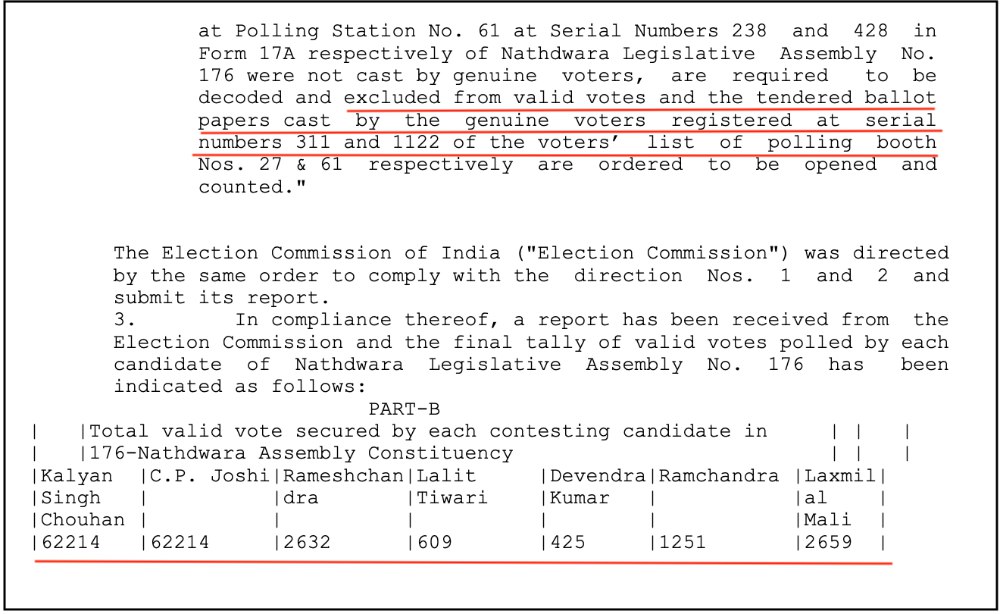
How many ‘Tendered Votes’ were cast in the 2014 Lok Sabha Elections?
As per information available with the Election Commission of India (ECI), a total of 4482 tendered votes were cast in the 2014 Lok Sabha elections. In other words, this is less than 0.0001% of the total valid votes cast in those elections. The highest number of such tendered votes were cast in Maharashtra (1922 out of 4482) or more than 40% of the total such votes. Rajasthan & West Bengal are the only two other states where more than 400 such votes were cast.
What about other types of Votes?
There are other special situations that a voter can encounter in the polling booth. Here is a round up.
What if there is a wrong print on the VVPAT?
When the voter makes a compliant that there is a wrong print on the VVPAT slip against the button pressed on the EVM, here is the process followed.
- Rule 49MA in the rules covers this situation
- A written declaration is signed by the voter
- The Presiding officer makes a second entry related to that voter in form 17A
- Then the voter is permitted to record test vote in presence of presiding officer & polling agents & observe the paper slip
- If allegation is found true, the polling is stopped and the returning officer is informed
- If allegation is found false, then the same is mentioned in Form 17A and the signature/thumb impression of the voter is obtained on the remarks
- Additionally, an entry of such test is made in form 17C
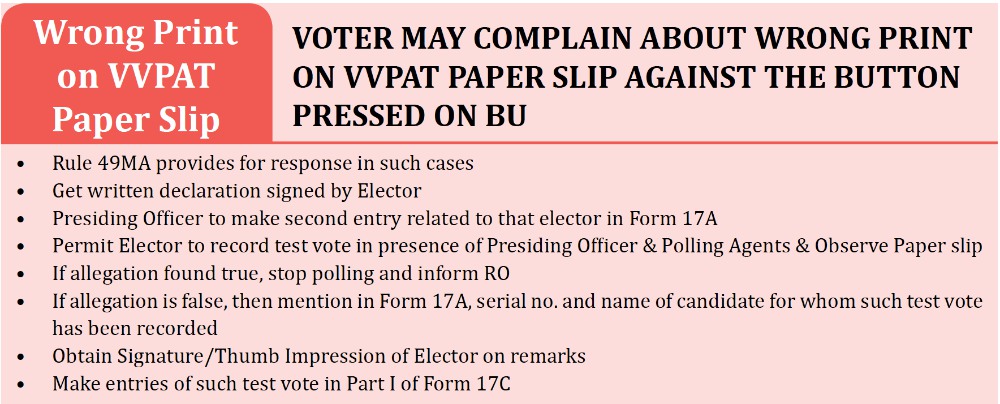
Voter from the ASD list
In order to prevent impersonation of Absentee, Shifted and Dead Voters, whose names continue to appear in the electoral rolls, list of such voters (ASD List) is prepared polling station wise and provided to the concerned Presiding Officer. If any person listed in the ASD list turns up for voting, his identity has to be verified thoroughly before allowing the person to vote. It has to be noted that the names of these voters still appear on the roll and are not deleted. The voters whose name is not on the roll cannot vote.

The case of a ‘Challenged Vote’
The polling agent present inside the booth may challenge the identity of any voter by depositing a sum of Rs. 2/- with the presiding officer. The presiding officer then holds an inquiry into this challenge. If the challenge is not established after the inquiry, then the voter is allowed to vote. However, if the challenge is established, the voter is not only debarred from voting, but also handed over to the police along with a written complaint.

Declaration by the voter in the case of enquiry about his age
If the presiding officer considers a voter much below the qualifying age of 18 years, he has to satisfy himself about the identity of the voter. He also has to obtain a declaration about the voter’s age as on 1st January of the year of reference and inform the voter about the penal provisions in case of any wrong declaration. In addition, the presiding officer has to prepare a list of such voters from whom such a declaration has been obtained.

What about those who do not wish to vote after coming to the polling booth?
There could be voters who do not wish to vote after coming to the polling booth. Many of them might prefer NOTA, but there could still be a few who may refuse to vote. In such cases, the presiding officer has to put a remark ‘refused to vote’ in the register of voters and he has to sign below the remark. The number of such voters has to be mentioned in form 17C.




1 Comment
Pingback: Lok Sabha elections: Here’s how votes are counted to arrive at results – Citizen Matters